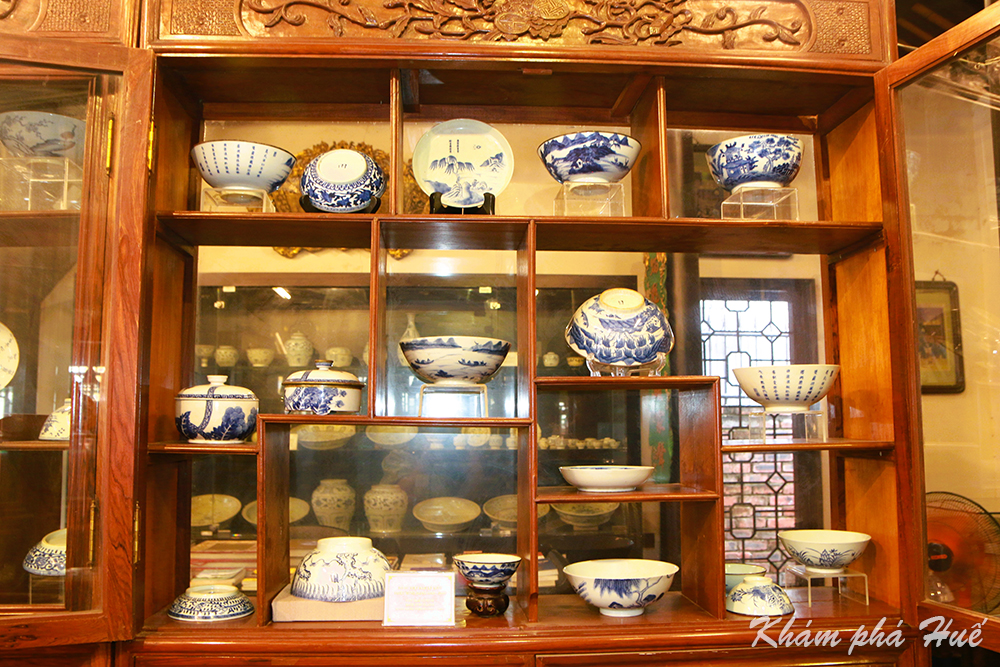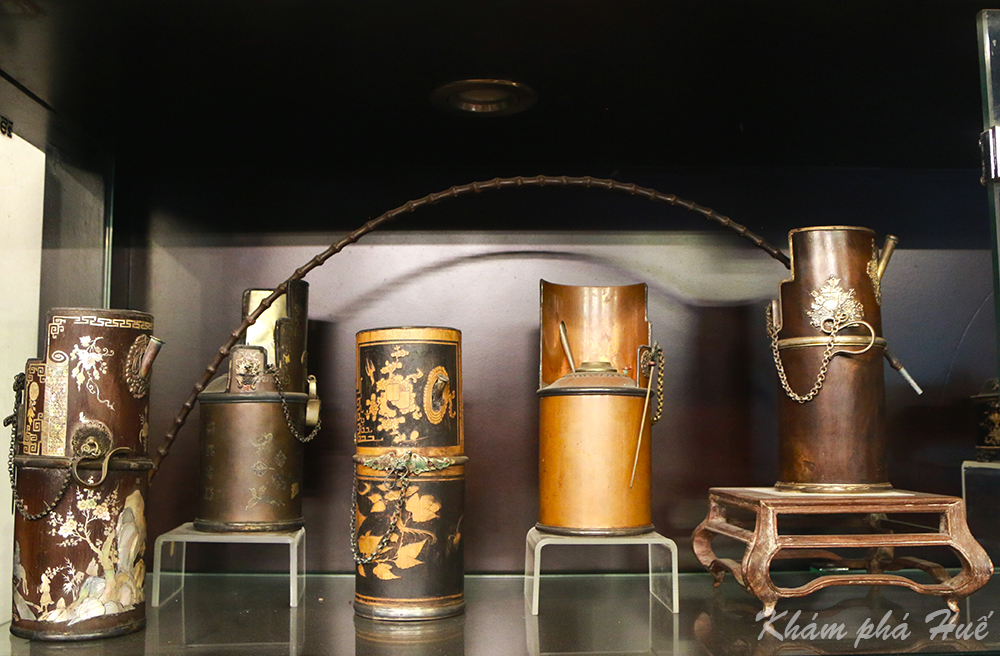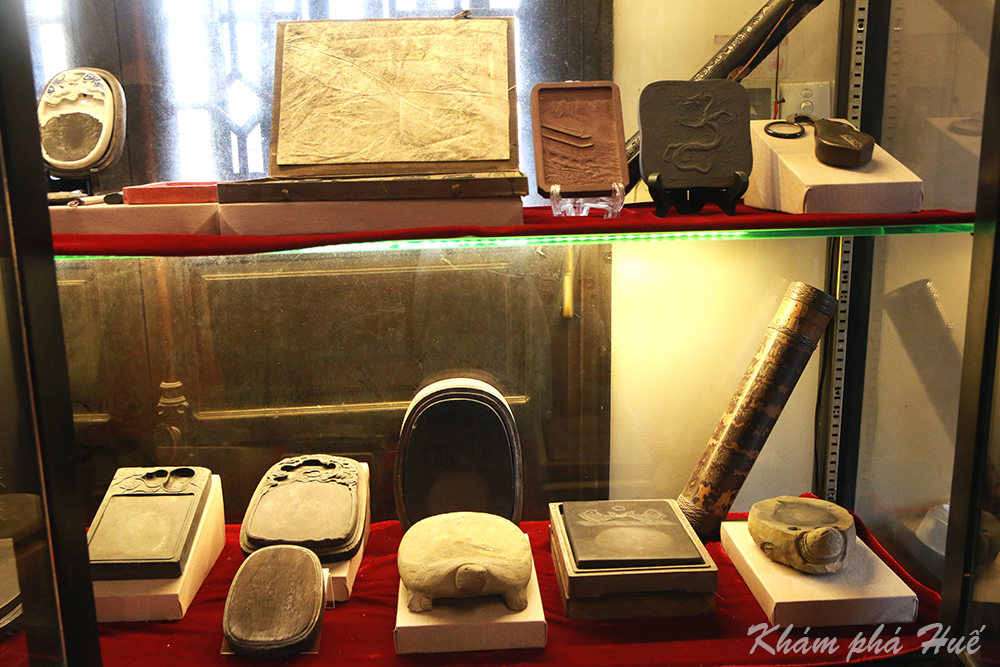Currently, the Museum of Nguyen Dynasty Commissioned Porcelains features three main collections, including the Nguyen Dynasty Commissioned Porcelain Collection (from 1802 to 1945), the Vietnamese Ceramics Collection (from the 1st century to the 20th century), and the collection serving the "four pleasures" of the Vietnamese people (including betel chewing, tea enjoyment, smoking, and drinking alcohol).
1. Nguyen Dynasty Commissioned Porcelain Collection (from 1802 to 1945)
The Nguyen Dynasty Commissioned Porcelain Collection comprises items made from porcelain to serve the activities of the imperial court and the royal family. These pieces were designed and ordered by kings and high-ranking officials and produced in renowned kilns in foreign countries such as China, England, France, Japan, etc. This tradition of porcelain production for the Nguyen Dynasty dates back to the reigns of Gia Long, Minh Mang, Thieu Tri, Tu Duc, and continued through the reigns of Khai Dinh and Bao Dai.
Porcelain commissioned by the king is referred to as "ngự dụng," while that commissioned by officials is called "quan dụng."

In each historical period, these antiquities exhibit differences in their themes, patterns, motifs, and decorative colors. Some of these artifacts feature printed poems and beautiful scenes that praise the beauty of the homeland. Others are adorned with enamel, gold, silver, and decorations depicting images of dragons, phoenixes, or various motifs like the octagonal pattern, the four blessings, and the four seasons. Through these differences, they vividly reflect the social order during the feudal era, the personality and worldview of the owners of these antiques, and, simultaneously, provide insights into the unique aspects of culture, art, and aesthetics during each historical period of these commissioned porcelain items. Additionally, they showcase the skill and craftsmanship of the ancient artisans who created them.
2. Vietnamese Ceramics Collection (from the 1st century to the 20th century)
The collection of Vietnamese ceramics from the 1st to the 20th century is divided into three smaller collections, including: Vietnamese ceramics from the 1st to the 9th century; Vietnamese ceramics during the Ly Tran period (from the 10th to the 14th century), and ceramics from the Le dynasty period (from the 15th to the 16th century).

3. Collection serving the "four pleasures" of the Vietnamese people (including betel chewing, tea enjoyment, smoking, and drinking alcohol)
The collection serving the "four joys" of the Vietnamese people, including betel chewing, tea enjoyment, smoking, and drinking alcohol, consists of a diverse array of artifacts made from various materials such as gold, silver, ivory, bronze, ceramics, and bamboo. These items showcase intricate craftsmanship and have been created by the skilled hands of multiple generations of artisans over a historical span of 200 years.

Additionally, the museum also features collections such as:
- "Nghiên bút một thời" Collection: This collection includes paper, brushes, ink, and ink stones, traditionally referred to as the "Văn phòng tứ bảo" These items convey language, meaning, art, and the philosophical outlook of each individual.

The "Nghiên bút một thời" collection includes a variety of shapes, materials, and decorative motifs such as dragons, turtles, scenic landscapes, and historical anecdotes.
- The Buddha Statue Collection and Casting Molds for Statues from the 6th to the 12th Century.

The Buddha Statue Collection and casting molds for statues from the 6th to the 12th century are exhibited within the premises of the Museum of Nguyen Dynasty Commissioned Porcelains.
- The Vietnamese Bronze Collection (from the 10th to the 20th century), the Collection of Japanese Overglaze Enamel and Blue and White Porcelain (from the 19th to the 20th century), and various other valuable collections are also part of the Museum's holdings.
It can be said that the Museum of Nguyen Dynasty Commissioned Porcelains houses an invaluable cultural treasure within the heart of the ancient capital, Hue. Each antique item here tells a fascinating story for those who wish to explore and discover the cultural beauty left behind by previous generations.